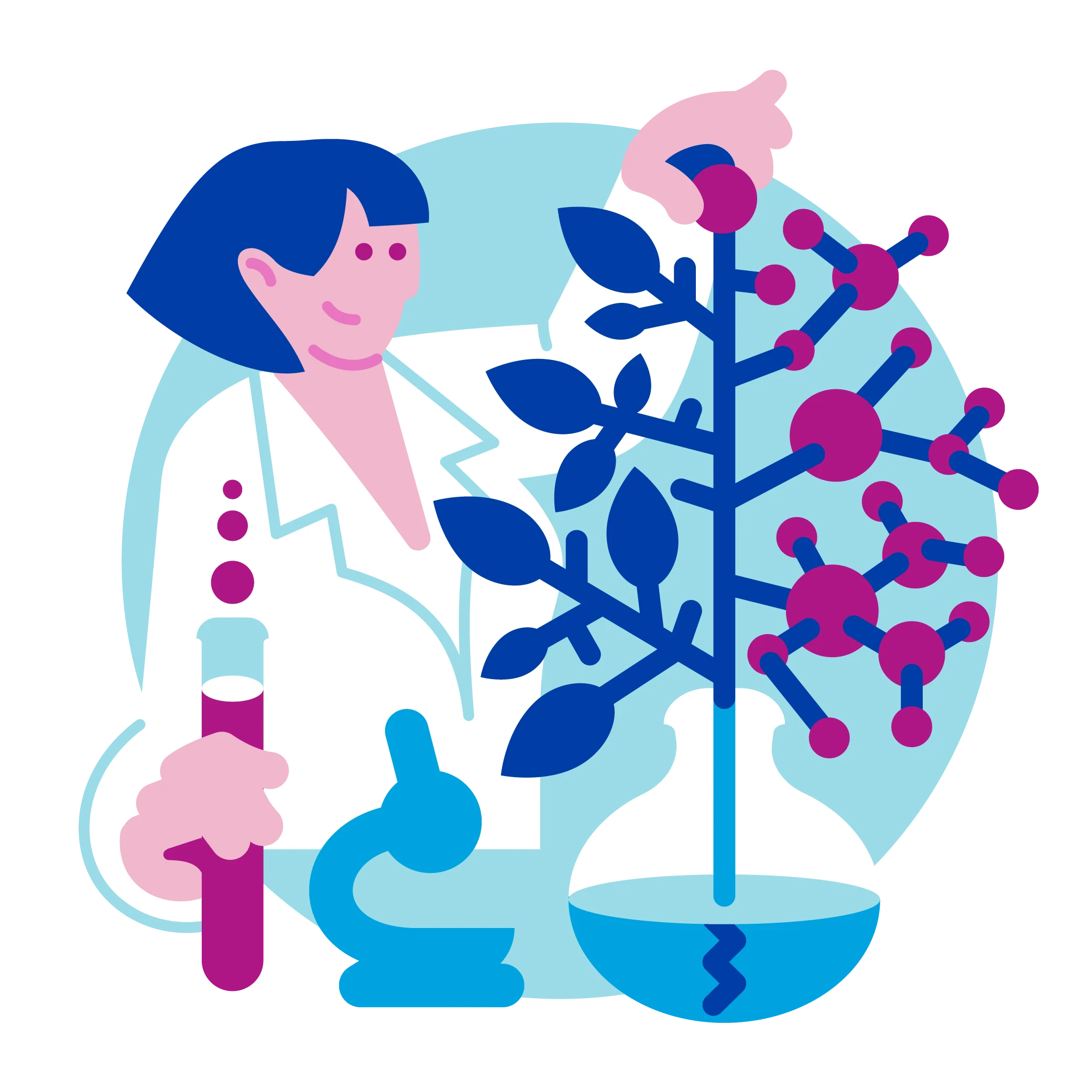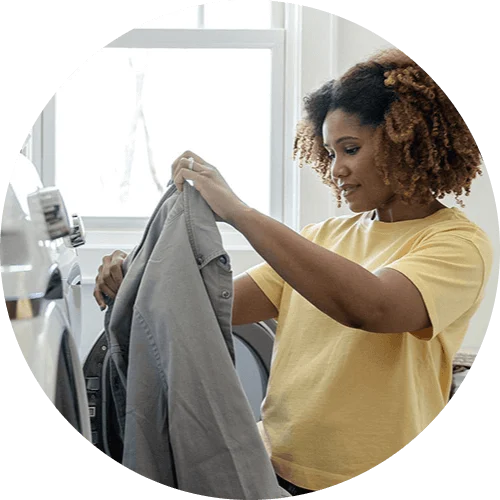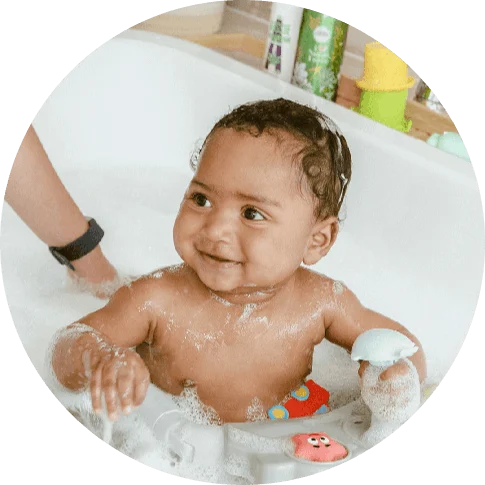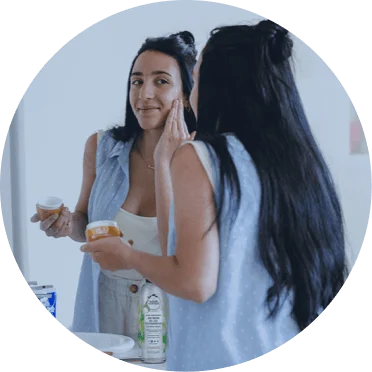
Ingredients.
Safety is our first ingredient. We know you want to know as much as you can about our products and their ingredients. That’s why we’re continuing to provide transparency around our ingredient innovation and safety science. If you don’t find what you’re looking for here or on P&G brand sites, contact us here.

Ingredient choices and how we make them
Some people believe natural product ingredients are safer to use than man-made, synthetic ones. The reality is that it’s not that simple; both natural and synthetic ingredients have a safe range and an unsafe range. Even basics like sunlight, oxygen, and water have safety limits. So what goes into choosing our product ingredients?

1. Safety
First we define the safe range for every ingredient, whether natural or synthetic. Then we apply the same science-based approach as regulatory agencies around the world.2. Performance
Every ingredient has a role in delivering the performance you expect from our products. We seek to use the best ingredients for our products so that you can use them with confidence.3. Sustainable Sourcing
Synthetic ingredients can oftentimes be more sustainable than natural ingredients because they require fewer resources. Sustainable features of a product ingredient depend on the resources used in creating it, harvesting it, making the product and then ultimately using the product. And we’re also doing the legwork to ensure we use the most sustainable and earth-friendly solutions.Ingredients we do not use
Here is a list of some of the most common materials we get asked about that we do not use as ingredients in any of our formulated products (health care, skin and personal cleansing, hair care, laundry, home care, and oral care):
- Alkylphenols and alkylphenol ethoxylates
- Benzene
- Bisphenol A (not in formulas*)
- Heavy metals: Arsenic, Lead, Chromium VI, Mercury, Cadmium, Nickel
- Microbeads
- Organotins (TBT, DBT, MBT, DOT)
- PVC (not in formulas*)
- PAHs (Polycyclic aromatic hydrocarbons)
- PCBs (Polychlorinated biphenyls)
- Phthalates**
- Triclosan
- Triclocarban**
This list is not exhaustive but a starting point. For specific product ingredients, please see the Brand website here.
We have strict product safety limits in place when any of these materials could be found in tiny amounts due to their natural (or background) presence in water, the environment, or as part of the manufacturing process.
* We do not use BPA or PVC in any of our product formulas. Our use of PVC and BPA is restricted to very small amounts in some product packaging like pressurized aerosol cans or electrical devices where their unique performance is essential for product safety. We will consider new material options as soon as they do arise.
** We do not use these ingredients in new products and are exiting them. More details on our exit timings for these materials can be found in the Common Ingredient Questions section above.
Understanding Specific Ingredients
Even though we ensure our products are safe to use before they hit shelves, we know there’s a lot of conversation around certain product ingredients. Here's our point of view:
1,4-dioxane is not an ingredient, but rather a by-product that can form in tiny (trace) amounts when making a variety of ingredients in some cleaning products.
Importantly, the presence of 1,4-dioxane in our products is already well below established safe limits and is in compliance with all government requirements. For example, if you washed and wore over 1,000 loads of laundry every day, you’d still be below the safe limit for 1,4-dioxane.
We’re continually working to reduce and/or eliminate it while still delivering the performance we all expect.
Phosphates are essential nutrients for plant growth and a healthy ecosystem, and are commonly found in fertilizers. While phosphate is naturally present in the environment, it can also be released in much smaller amounts from some cleaning products after their use.
We developed a series of product innovations to produce many effective, phosphate-free cleaning products without a compromise in cleaning performance. Therefore, we’ve removed phosphates from over 95% of our cleaning products already—and are working to eliminate the remaining 5% from our consumer products over the next few years. In the few instances we continue to use phosphates, we are in compliance with all applicable regulatory limits.
You may have heard general safety questions about phthalates. There are several types of phthalates and each one is different (much like there are safe and unsafe types of mushrooms). We comply with all phthalate bans globally. In fact, we have removed the only phthalate that was used in our product fragrances even though agencies found it to be safe.
Triclosan and triclocarban are antimicrobial ingredients that slow or stop the growth of germs such as bacteria and mildew. We have already eliminated triclosan from our products globally and have an exit plan for our few remaining uses of triclocarban.
Microbeads are solid plastic particles of 5 mm or less and are used to exfoliate or cleanse in personal care products.
We previously included microbeads in some of our exfoliating cleansing products and toothpastes based on positive feedback from people who use them. Because microbeads are made from plastic, certain groups have questioned whether plastic found in our oceans and waterways is from microbeads. The science to date shows the breakdown of larger plastics to be the primary source of plastics in the ocean, not microbeads.
Now we have removed microbeads from all P&G facial/body cleansers and toothpaste formulas, so today the products we are manufacturing are microbead-free.
Fragrances are naturally all around us and create a range of sensations and can make your daily routine enjoyable. Our product fragrances are blended with the utmost care and greatest attention to safety.
We do not use many common food allergens in our fragrances, including Egg Derivatives, Milk Derivatives, Gluten, Barley, Rye, Soy Derivatives, Fish or Shellfish. In total, we exclude over 170 ingredients from our fragrances—more exclusive than the list of ingredients banned by the International Fragrance Association. Additional information about the fragrance ingredients we use in our products can be found for most items in the U.S. and Canada on the brand website and via SmartLabel®.
With regard to our menstrual products, our number one priority is to provide consumers with superior period protection with the highest standards of safety and quality. Our products are safe when used as intended, comply with all applicable laws and regulations, and will continue to do so. We have a rigorous approach to managing all materials throughout our products, packaging, supply chain, and manufacturing processes. We work with suppliers, regulators, and other stakeholders to advance the science and to identify, restrict and reduce the potential for the unintentional presence of materials of concern throughout these processes. We do not formulate any of our menstrual products with any type of PFAS. To date, we have engaged with strategic partners in our supply chain to identify and work to eliminate potential sources of unintentional PFAS presence, if any, in our menstrual products. We remain committed to the health and safety of our consumers and will continue to deliver products with the highest standards of safety and quality, as we have done for more than 85 years.

Fragrance Ingredients List
Since 2020 we have published fragrance ingredients down to 0.01% for all our fragranced products in the US and Canada.
Preservatives (including parabens and others)
Preservatives help keep all of us safe by preventing growth of bacteria and mold during the use of consumer products. Different product types need different preservatives that work best for that particular formula. You can rest assured that all of our preservatives comply with applicable regulations and safe limits wherever they are sold.
To find out what preservative is used in your product, you will find more information via Smartlabel® for US and Canada.
| Baby diapers & feminine hygiene | Baby wipes | Air fresheners | Health & oral care | Laundry & household cleaning | Hair care & personal cleaning | Skin care leave on products | Learn more | |
|---|---|---|---|---|---|---|---|---|
| Benzoic acid | contain | contain | contain | contain | contain | Visit site | ||
| Benzyl alcohol | contain | contain | contain | Visit site | ||||
| DMDM Hydantoin | contain | contain | Visit site | |||||
| Diazolidinyl urea (small number of products) | contain | Visit site | ||||||
| Imidazolidinyl urea (small number of products) | contain | Visit site | ||||||
| Quaternium-15 (small number of products) | contain | Visit site | ||||||
| Formic Acid | contain | contain | Visit site | |||||
| Glutaraldehyde | contain | contain | Visit site | |||||
| Iodopropynyl Butylcarbarnate | contain | contain | Visit site | |||||
| Isothiazolinones: Benzoisothiazolinone | contain | contain | Visit site | |||||
| Methylisothiazolinone | contain | contain | Visit site | |||||
| Methylchloroisothiazolinone | contain | contain | Visit site | |||||
| Parabens Methyl-, Ethyl-, Propyl- & Butylparaben | contain | contain | contain | Visit site | ||||
| Phenoxyethanol | contain | contain | contain | Visit site | ||||
| Salicylic Acid | contain | contain | Visit site | |||||
| Sorbic Acid | contain | Visit site |
A small number of products require a different preservative not listed above, including potassium sorbate, benzalkonium chloride, dehydroaceticacid and chlorhexidine digluconate. They are indicated on the ingredient list in the product used.
For more information on our product safety data, certifications and strategies, visit our Product Safety site.


